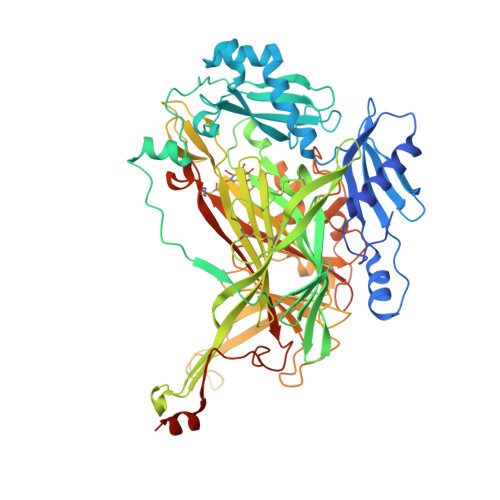Mutation at a strictly conserved, active site tyrosine in the copper amine oxidase leads to uncontrolled oxygenase activity.
Chen, Z.W., Datta, S., Dubois, J.L., Klinman, J.P., Mathews, F.S.(2010) Biochemistry 49: 7393-7402
- PubMed: 20684524
- DOI: https://doi.org/10.1021/bi100643y
- Primary Citation of Related Structures:
3N9H, 3NBB, 3NBJ - PubMed Abstract:
The copper amine oxidases carry out two copper-dependent processes: production of their own redox-active cofactor (2,4,5-trihydroxyphenylalanine quinone, TPQ) and the subsequent oxidative deamination of substrate amines. Because the same active site pocket must facilitate both reactions, individual active site residues may serve multiple roles. We have examined the roles of a strictly conserved active site tyrosine Y305 in the copper amine oxidase from Hansenula polymorpha kinetically, spetroscopically (Dubois and Klinman (2006) Biochemistry 45, 3178), and, in the present work, structurally. While the Y305A enzyme is almost identical to the wild type, a novel, highly oxygenated species replaces TPQ in the Y305F active sites. This new structure not only provides the first direct detection of peroxy intermediates in cofactor biogenesis but also indicates the critical control of oxidation chemistry that can be conferred by a single active site residue.
Organizational Affiliation:
Department of Biochemistry and Molecular Biophysics, Washington University School of Medicine, 660 South Euclid Avenue, Box 8231, St. Louis, Missouri 63110, USA.



















